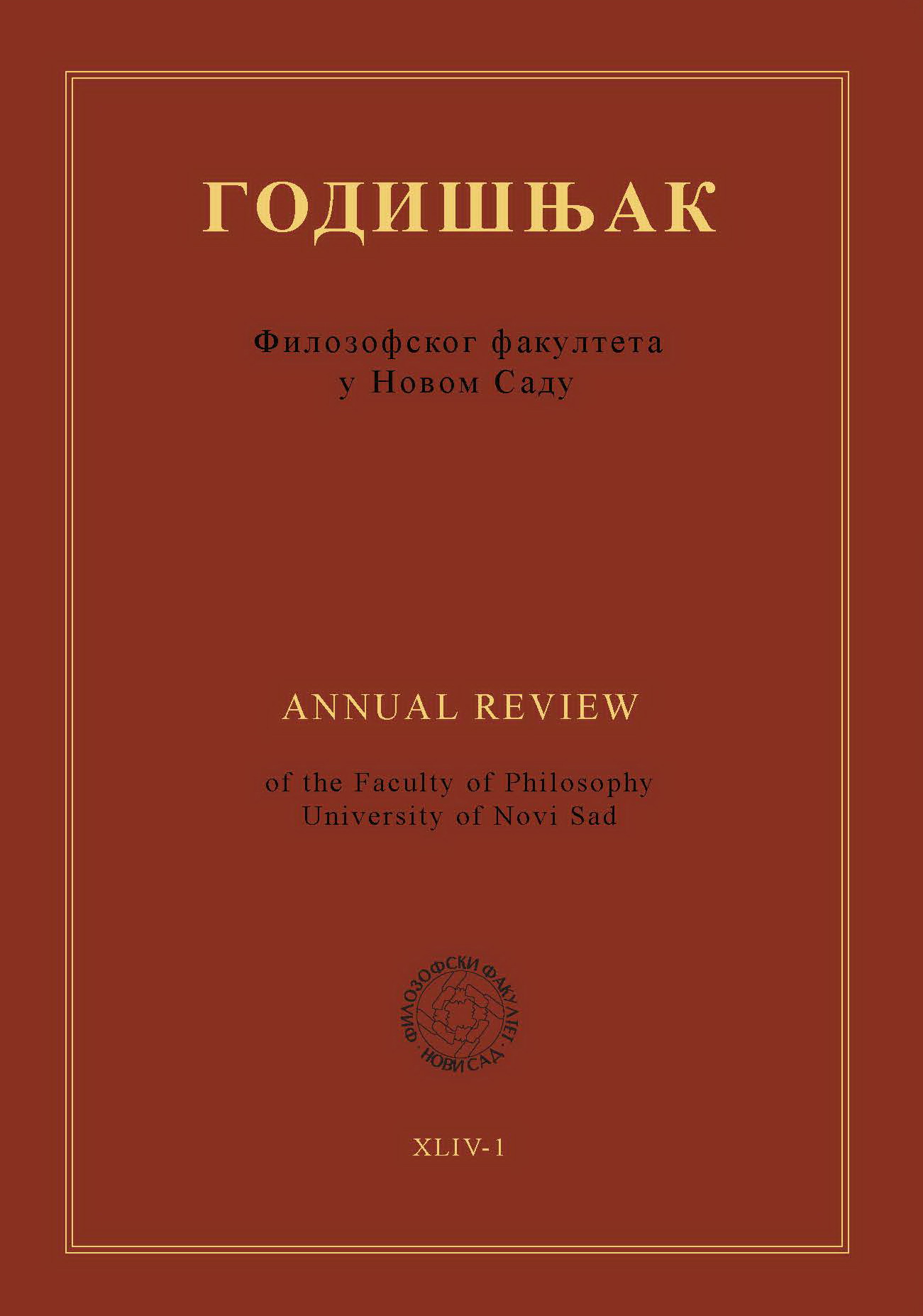FROM NOSE TO CHARACTER: PHYSIOGNOMY OF CHARACTERS IN THE SHORT STORIES OF JANKO POLIĆ KAMOV
Main Article Content
Abstract
The paper is on the research of impact of physiognomic theories on the dependence of person’s character on his outer appearance in the characterization of protagonists in short stories by Janko Polić Kamov. In Croatian literary realism there is a significant number of examples in which the personality of a main character is shaped according to his physical appearance. Prose works of prominent representatives of Croatian literary realism followed the pattern of characterization in line with the physical appearance of a character with a particular focus on his nose. In the examples of characterization of protagonists in Kamov’s prose it is noticeable that there is an unavoidable relationship between character’s nose and his human values and conduct. In accordance with the accomplishments of previous researches on the impact of physiognomic theories on attitudes expressed in the essays by Janko Polić Kamov, in this paper the research is extended to his short stories to determine more precisely his view on modernist literature. It is concluded in the paper that Kamov often motivates behavior of a character and his value judgments according to his outer appearance and that in a short story written by Kamov at the end of his life he departs from characterization that puts an equation between physical and ethical. Abandoning the process of equalizing physical and ethical is accompanied with a strong irony, as well as an inner crisis of the main protagonist of the short story Bitanga (The Scamp). The failure of physiognomic theory to serve to a self-analysis confirms it is not trustworthy in advocating a strong causality between physical and moral, but it also confirms an assumption that Kamov is an author who did not manage to avoid contradictions of modernist literature.
Downloads
Article Details
References
Benedict, B.M. (1995). Physiognomy and Epistemology in Late Eighteenth-Century Sentimental Novels. Studies in Philology, 92, 3, 311-328.
Cavaglion, G. (2011). Was Cesare Lombroso Antisemitic?, Journal for the Study of Antisemitism, 3, 647-665.
Čutura, V. (2016). Postmodernizam i kriminologija – povratak antropološkim izvorištima. Književna smotra, 182, 4. 17-22.
Frangeš, I. (1987). Povijest hrvatske književnosti. Zagreb/Ljubljana: Nakladni zavod Matice hrvatske/Cankarjeva založba.
Gašparović, D. (1988). Kamov, apsurd, anarhija, groteska. Zagreb: Cekade.
Hall, J. Y. (1977). Gall`s Phrenology: A Romantic Psychology. Studies in Romanticism, 16, 3, 305-317.
Kneale, N. (2000). The Scent of Perversion. U: Rijke, V.D.–Østermark-Johansen, L. & Thomas, H. (2000). Nose Book: Representations of the Nose in Literature and the Arts. London: Middlesex University Press. 221-239.
Kovačić, A. (1963). U registraturi. Beograd: „Branko Đonović“.
Kozarac, J. (1964). Mrtvi kapitali. Među svjetlom i tminom. Pripovijesti. Zagreb: Matica hrvatska/Zora.
Lavater, J.C. (ca. 1860). Essays on physiognomy. New York: R. Worthington.
Lőkös, I. (2007). Od Battorycha do Tivadara Blagaychicha. Mađarofilski tipovi iz galerije likova Gjalskijevih djela. Croatica et Slavica Iadertina, III, 261-277.
Lombroso, C. (1911). Criminal Man. New York/London: G.P. Putnam’s sons.
Meyer-Fraatz, A. (2014). Ambigvitet i ambivalentnost u „Romanu” Janka Polića Kamova. U: Pavlović, C.–Glunčić-Bužančić, V.–Meyer-Fratz, A. (ured.) (2014). Komparativna povijest hrvatske književnosti. Matoš i Kamov: paradigme prijeloma. Split/Zagreb: Književni krug Split/Odsjek za komparativnu književnost Filozofskog fakulteta Sveučilišta u Zagrebu. 236-247.
Milanović, Ž. (2017). Janko Polić Kamov i Čezare Lombrozo: modernost i pozitivistička kriminologija. Godišnjak Filozofskog fakulteta. XLII-1, 377-392.
Østermark-Johansen, L. (2000). Broken, Simian and Syphilitic Noses in Nineteenth-century Art and Physiognomy. U: Rijke, V.D.–Østermark-Johansen, L. & Thomas, H. (2000). Nose Book: Representations of the Nose in Literature and the Arts. London: Middlesex University Press. 201-219.
Protrka, M. (2001). Pripovjedačeva maska lakrdijaša. Čitanje Kamovljeve novele Katastrofa. Umjetnost riječi. XLV-2, 117-124.
Protrka, M. (2004). Imenovanje, (dez)identifikacija, ludilo. Kamovljev Bitanga kao antimodernistički lik intelektualca. U: Milanja, C, Bošnjak, B. i Bošnjak, V. (ured.) (2004) Mediji hrvatske književnosti. Zagreb: Altagama. 215-229.
Šandor Đalski, K. (1952). Djela. Zagreb: Zora.
Šenoa, A. (1964). Seljačka buna. Beograd: Rad.
Šenoa, A. (1980). Prosjak Luka. Sarajevo: „Veselin Masleša“.
Šenoa, A. (1982). Zlatarovo zlato. Sarajevo: „Veselin Masleša“.
Šicel, M. (1971). Pregled novije hrvatske književnosti. Zagreb: Matica hrvatska.
Šicel, M. (1978). Književnost moderne. Zagreb: Liber/Mladost.
Štampar, E. (1952). Protivrječja u ličnosti Đalskog. U: Šandor Đalski, K. (1952). Djela. Zagreb: Zora. 7-58.
Tadijanović, D. (1956). O Sabranim djelima Janka Polića Kamova. U: Polić Kamov, J. (1956). Pjesme, novele i lakrdije. Rijeka: „Otokar Keršovani“. 461-481.
Todorov, C. (1994). Mi i drugi. Francuska misao o ljudskoj raznolikosti. Beograd: Biblioteka XX vek.
Wolfgang, E.M. (1961). Pioneers in Criminology: Cesare Lombroso (1825-1909). Journal of Criminal Law and Criminology. 52-4, 361-391.
Žmegač, V. (2001). Osnove moderne. U: Batušić, N.–Žmegač, V.–Kravar, Z. (2001). Književni protusvjetovi. Poglavlja iz hrvatske moderne. Matica hrvatska: Zagreb. 11-24.




